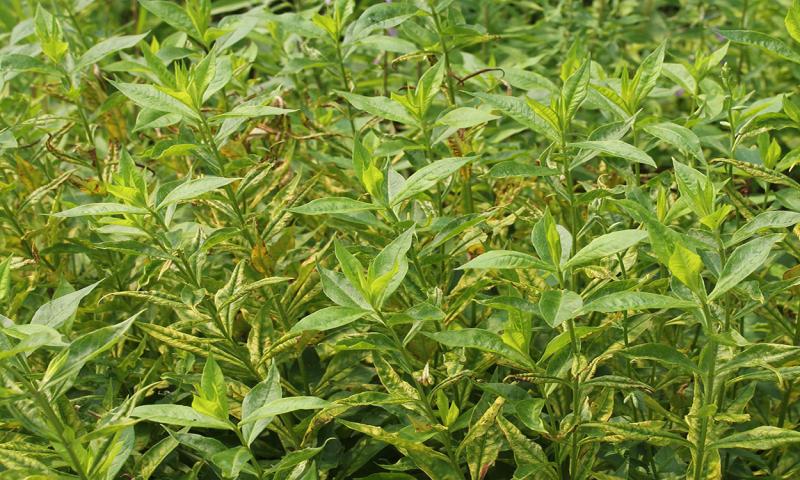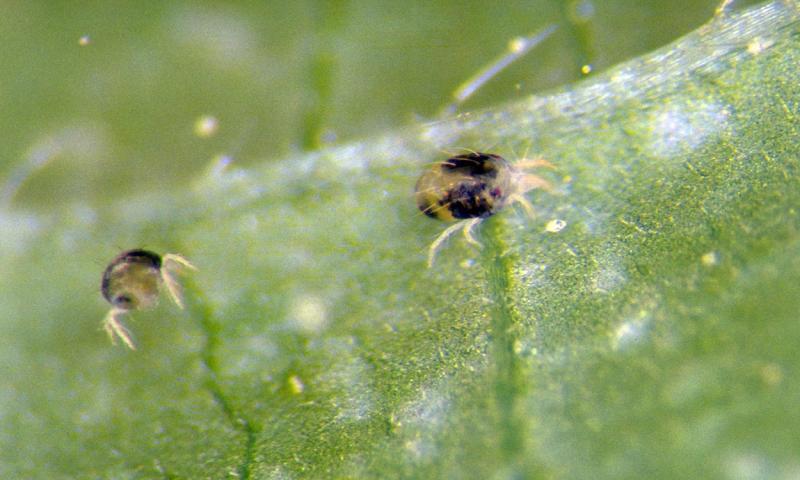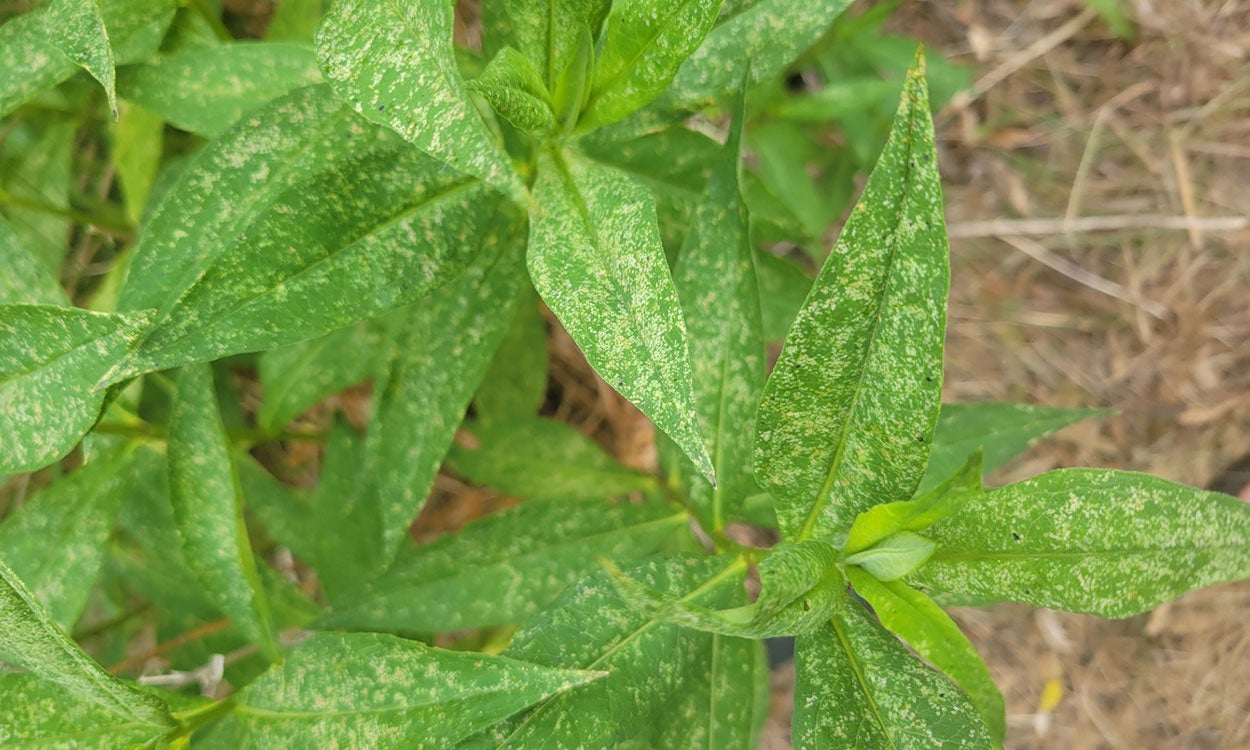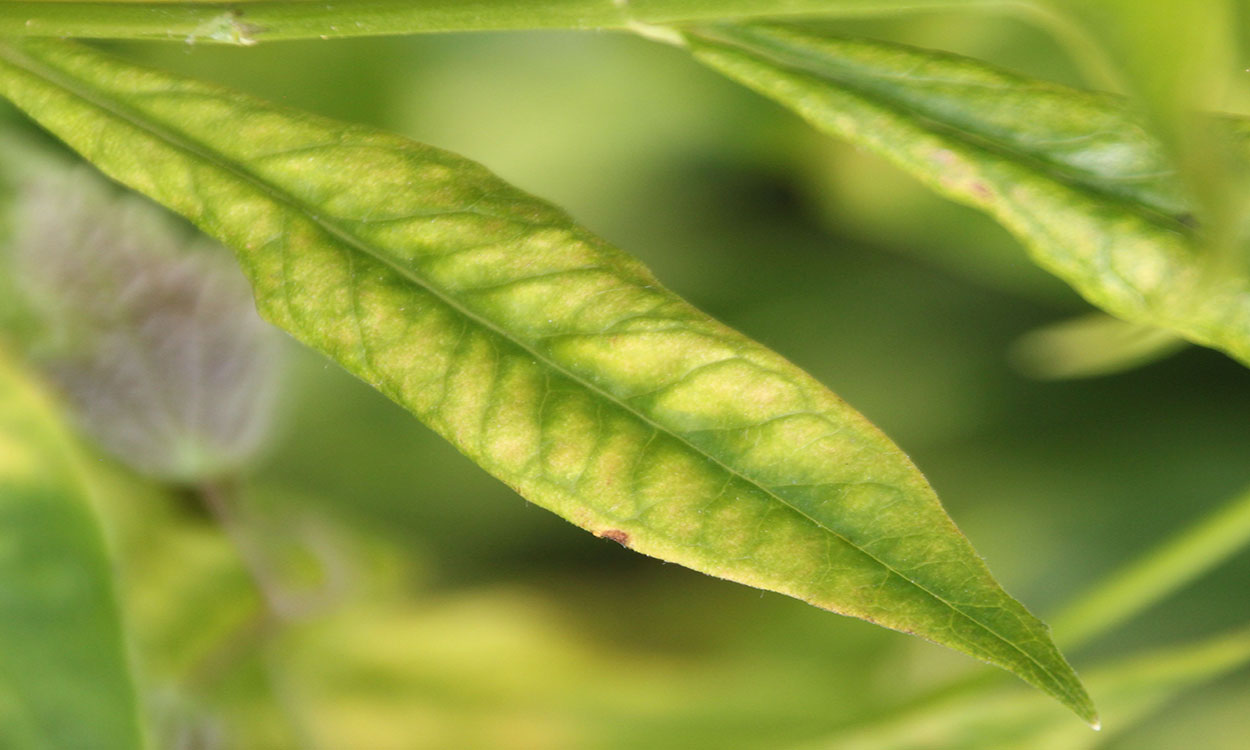Original article by David Graper. Reviewed and updated by Amanda Bachmann and Kristine Lang.

Garden phlox (Phlox paniculata) is a popular garden perennial, noted for its beautiful display of flowers during the middle of the summer. Flower colors range from white to pink, purple, red, and lavender. Plants grow up to about 4 feet in height and may eventually spread out to a similar distance. Generally, Phlox is an easy plant to grow with few problems, except for powdery mildew, but that fungal disease normally does not show up until later in the summer or early fall. It causes the leaves to develop a whitish cast as the mycelium of the fungus grows along the surface of the leaves and stems. While it normally does not kill the plants, it can make them look rather ugly. Many of the newer varieties of Phlox are resistant to powdery mildew. But there is another pest problem that can show up in phlox, particularly if plants are growing in a dry location that may also experience extra warmth from reflected heat of a sidewalk or wall behind the plants. That problem is spider mites.
Identifying Spider Mite Damage

Spider mites usually feed on the underside of the leaves (Figure 1), where they insert their sucking mouthparts to suck sap from individual plant cells. Those cells then die giving the leaves a speckled or bronzed appearance (Figure 2).
Close examination of the undersides of the leaves may also reveal dark fecal spots, as well as minute webbing and the spider mites themselves. However, you will most likely need a magnifying lens to be able to see the minute mites, as they are very small.
As spider mite feeding progresses, the leaves of the plants turn yellow (Figure 3), often cup downward and eventually turn brown and fall off the plant completely. Damage usually progresses from the bottom of the plant upward.
Speckling

Yellowing

Managing Spider Mite Infestations
- Growing phlox in a cool location with moist soils will usually limit spider mite infestations.
- Provide extra water to plants during dry periods.
- Forceful jets of water will help to dislodge mites and slow their spread.
- Insecticidal soaps are also useful in combating mites, but they must be applied carefully to get the insecticide delivered to the undersides of the leaves, where the mites are, to be effective.


